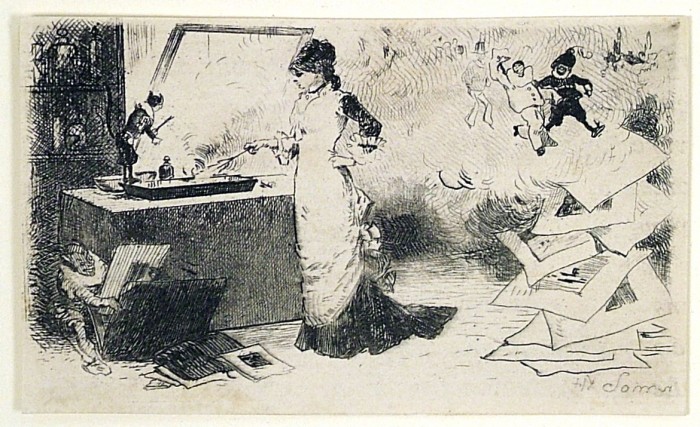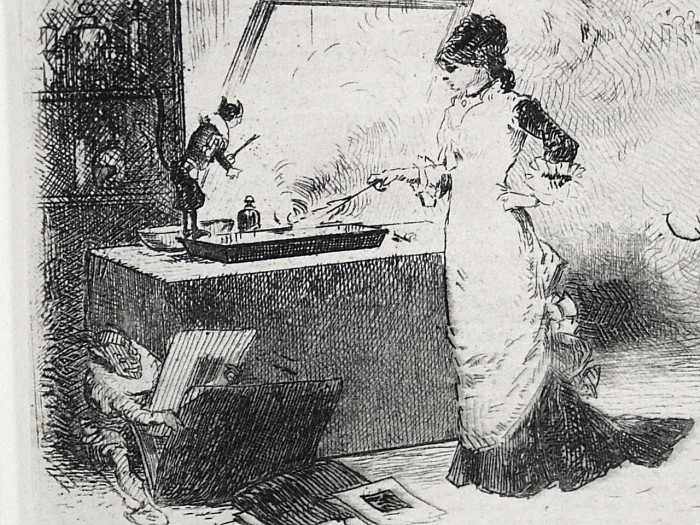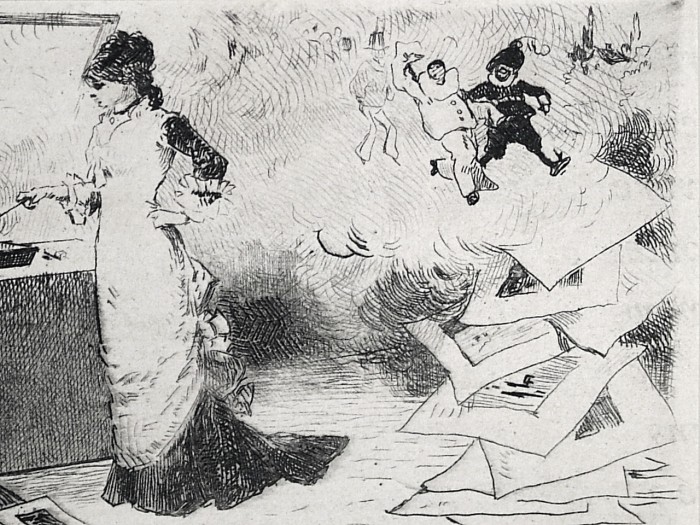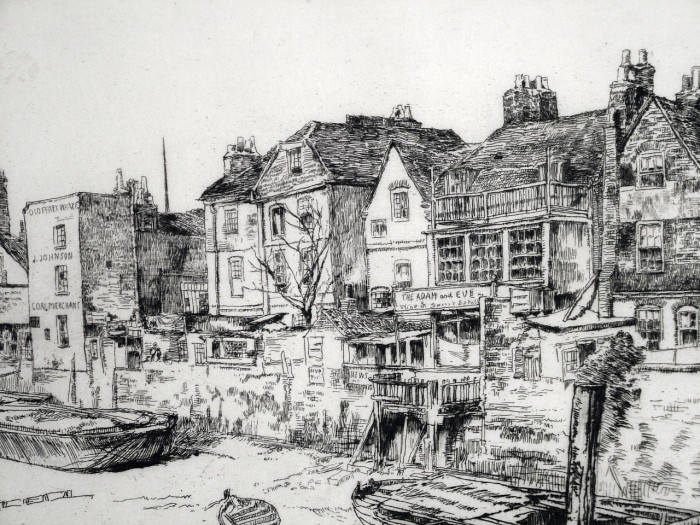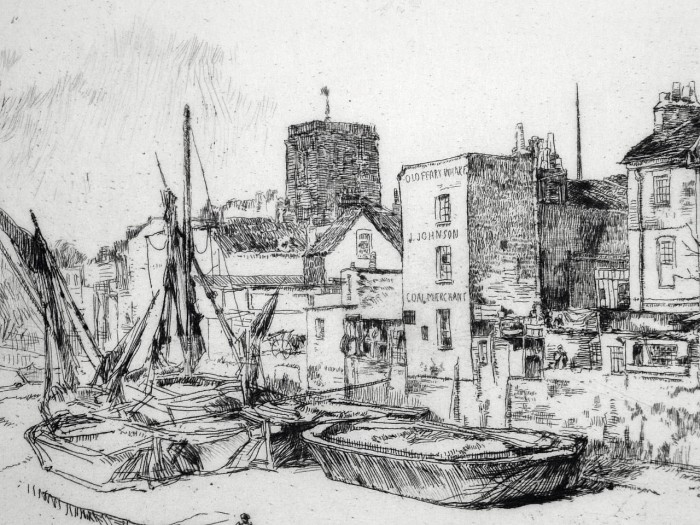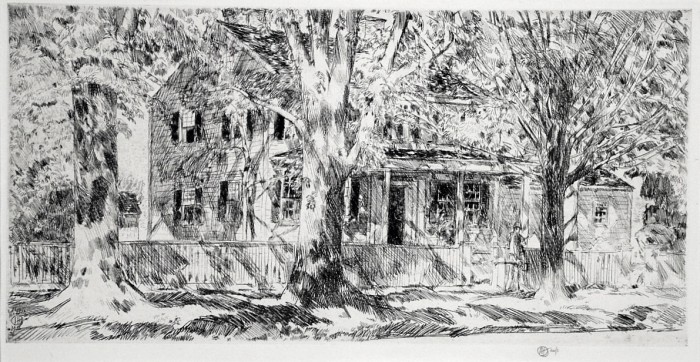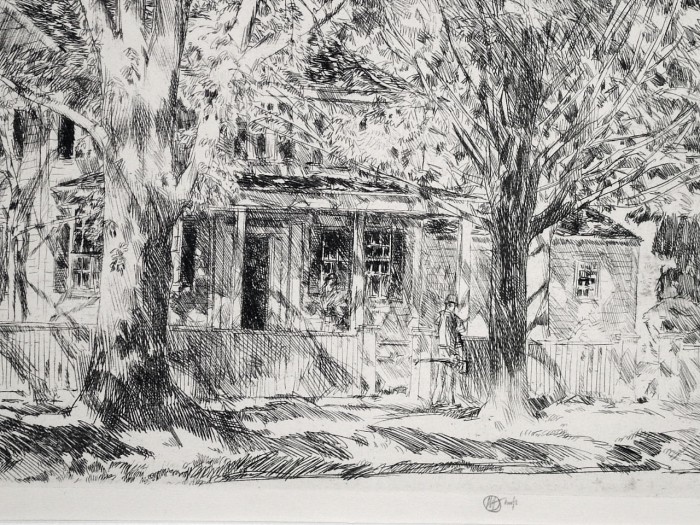
Winslow Homer – Fly Fishing, Saranac Lake
Winslow Homer (1836-1910), Fly Fishing, Saranac Lake, etching, aquatint and burnishing, 1889, signed lower left and numbered lower right (39) in pencil [also signed in the plate lower left “Winslow Homer Sc 1889 Copyright”]. Reference: Goodrich 104. Edition unknown but quite possibly intended 100; highest numbered impression known is 62. Printed on a simile japan paper, in very good condition (slightest toning; small fox mark in image); the full sheet, 17 3/8 x 22 1/5, the sheet 19 7/8 x 28 inches.
A very fine, rich impression of this print, perhaps the most highly sought after of the Homer etchings.
Fly Fishing, Saranac Lake is the only composition which the artist created exclusively as a print, not after one of his paintings; it is also probably his last etching.
Lifetime impressions of Fly Fishing, Saranac Lake are rarely seen on the market or encountered by collectors, but posthumous impressions of this print do appear from time to time, so it may be instructive to discuss the rather vast differences between the lifetime and posthumous impressions.
The printing of Homer’s lifetime impressions was handled by George W.H. Ritchie who at first also attempted, with limited success, to sell the prints; later the print dealer C. Klackner handled the sales. Around 1900 the five plates in Ritchie’s possession were put in storage and no more prints were made from them until about 1940, when Charles S. White, who had bought the business from Ritchie, began to make posthumous prints. The plates were bought by Williams Ivins, Curator of Prints at the Met in 1941, and are still at the Met; Ivins then had White make additional plates under his supervision.
Our impression compares favorably with the Met’s, which has some light tone, but the printing of their signed impression is very similar to ours. The Met impression, acquired in 1924, is printed on the same paper as ours, a relatively light simile japan; the Met also has a posthumous (unsigned) impression printed on a sturdier japan paper, as well as the plate.
The signed prints are printed with rich plate tone in the figure and central areas, and the plate tone has been selectively wiped in other areas, resulting in a strong contrast between the central figures and the surrounding areas. The posthumous impression has much plate tone overall but no differentiation between the central area and the rest of the print. Thus, the central figure is printed rather dryly in the posthumous printing relative to the lifetime impressions. This is consistent with Goodrich’s discussion of the lifetime and posthumous printings (p. 19, Lloyd Goodrich, The Graphic Art of Winslow Homer; he inexplicably prefers the flat later printing, referring to the earlier printing as “romantic”!).
There are many other differences as well. For example, the white area to the right of the fish was apparently burnished by Homer, to eliminate a number of lines and hazy shading; in the lifetime impressions the effect is a clear white as intended, but in the posthumous impression the use of heavy plate tone picked up some of these lines and hazy shading, thus defeating the desired burnished effect.
The top right corner of the posthumous impression shows some blotching and spotting resulting from the corrosion of the plate; this area is evident on the plate itself. The lifetime impressions, made prior to this corrosion, show no such effects.
